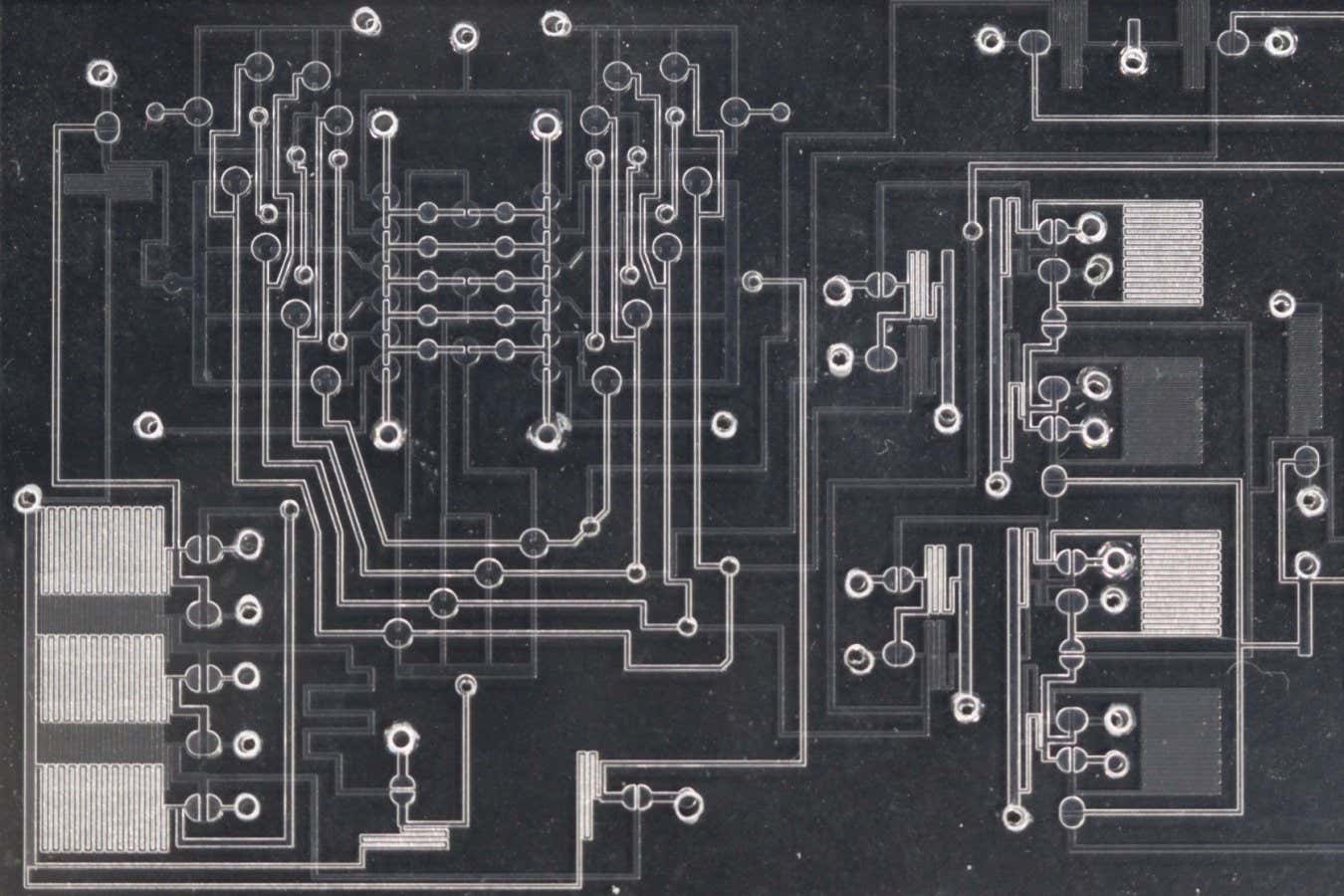A computer chip made of glass and silicone holds liquids that move from one side of the chip to the other in reaction to pressure changes. This has been used to control and automate miniaturised biochemistry experiments
By Karmela Padavic-Callaghan
2 June 2023
A computer chip made of glass and silicone, with channels that hold liquids
Hui Lab at UC Irvine
A pneumatic computer made of glass and silicone uses pressure instead of electricity to encode data. It can enable a chip-sized device to perform procedures that are usually done by technicians in labs.
Lab-on-a-chip devices have been pursued for decades as smaller, cheaper and portable alternatives to manually doing routine biochemistry with clunky glassware. While some biochemical experiments have been miniaturised – including growing cell cultures and tiny organs – most of these devices require much more equipment than just a chip.
“You could hold the chip in your hand, and everything would be happening on that chip, but if you zoomed out, you would see a refrigerator-sized box that is controlling it. That’s not really lab-on-a-chip,” says Elliot Hui at the University of California, Irvine. He and his colleagues set out to replace that huge box with a tiny computer that doesn’t need electricity and fits inside each lab-on-a-chip.
Advertisement
Read more:
Tiny chip can quickly identify hundreds of thousands of DNA sequences
They sandwiched a sheet of silicone 0.25 millimetres thick between two thin panes of glass. They etched tiny channels into the glass so that liquids needed for chemical reactions could flow through them, and then punched small holes into the silicone layer to connect channels between the two panes.
Differences in pressure pushed liquids through the channels, which mimics the way voltage changes make electricity flow through wires in electronic computer chips. They designated low, vacuum pressure as “1” and atmospheric pressure as “0”, and added tiny valves that can swap the two values. This turned the chip into a pneumatic computer.
